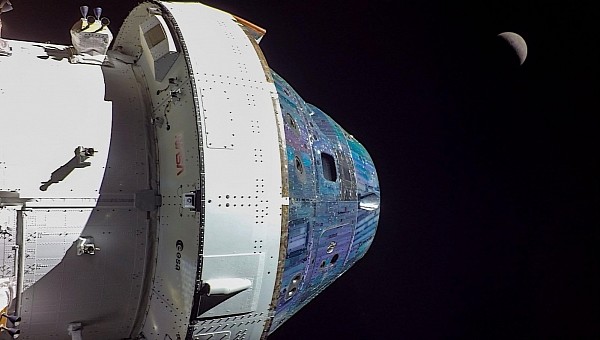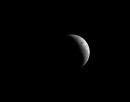It’s already day nine of the 25-day-long Artemis I mission, and despite some minor hiccups along the way, the journey seems to be going far better than expected. The Orion spaceship if now far away behind the Moon, getting ready for one of the most important maneuvers, entering the distant retrograde orbit around Earth’s satellite and getting back on track for home.
Distant retrograde orbit is NASA’s way of saying that Orion will orbit around the Moon at a massive distance of 50,000 miles (80,400 km) from its surface, moving opposite the direction the Moon travels around Earth.
Because this orbit is so far away from the Moon, the spaceship will need no less than six day to complete half a revolution around the body and enter a trajectory that’ll get it back to good-old Earth sometime in December.
To get in position to enter this orbit, the spaceship recently fired “the European Service Module’s auxiliary engines for 17 seconds to propel the spacecraft at 8.9 feet per second” – the most recent maneuver need for the task.
The distant retrograde orbit insertion burn is up next, scheduled to take place on Friday, November 25, at 4:52 p.m. EST – the burn will be broadcasted live on NASA TV. While in orbit, three more maintenance burns are scheduled as means to “keep the spacecraft on course.”
At the time of writing, the Orion spaceship is located at 229,698 miles (369,663 km) away from Earth and at 57,439 miles (92,439 km) from the Moon. It is moving at a speed of 2,941 mph (4,733 kph).
You can track in real time the position of the Orion spaceship, but also have access to a series of related tools to make the journey to the Moon and back even more exciting at this link.
Because this orbit is so far away from the Moon, the spaceship will need no less than six day to complete half a revolution around the body and enter a trajectory that’ll get it back to good-old Earth sometime in December.
To get in position to enter this orbit, the spaceship recently fired “the European Service Module’s auxiliary engines for 17 seconds to propel the spacecraft at 8.9 feet per second” – the most recent maneuver need for the task.
The distant retrograde orbit insertion burn is up next, scheduled to take place on Friday, November 25, at 4:52 p.m. EST – the burn will be broadcasted live on NASA TV. While in orbit, three more maintenance burns are scheduled as means to “keep the spacecraft on course.”
At the time of writing, the Orion spaceship is located at 229,698 miles (369,663 km) away from Earth and at 57,439 miles (92,439 km) from the Moon. It is moving at a speed of 2,941 mph (4,733 kph).
You can track in real time the position of the Orion spaceship, but also have access to a series of related tools to make the journey to the Moon and back even more exciting at this link.







